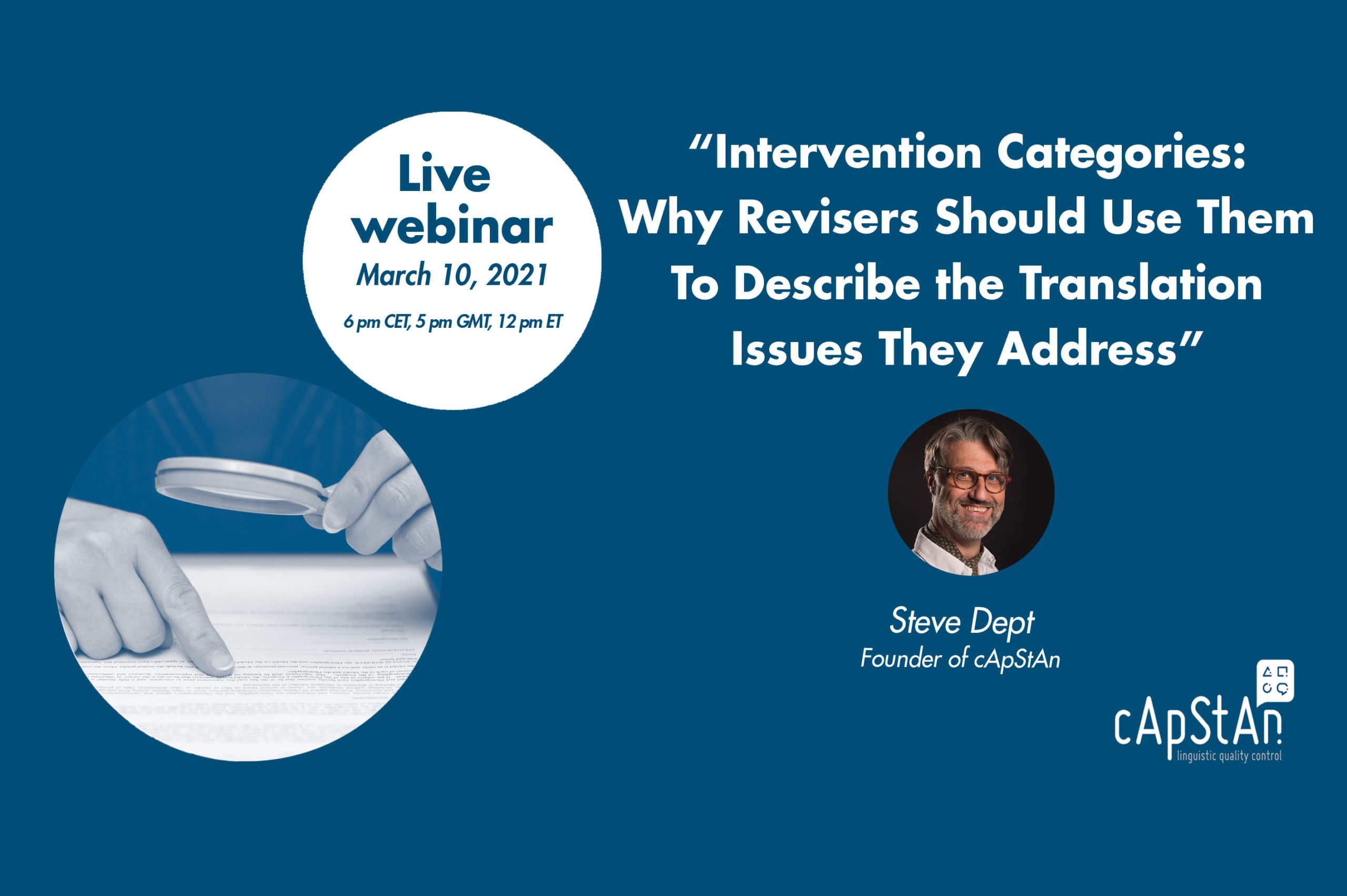
On-Demand Webinar | Intervention Categories: Why Revisers Should Use Them To Describe the Translation Issues They Address
There will always be some measure of subjectivity in translation quality evaluation, and subjectivity is what makes translation quality so hard to measure. To begin with, one can train revisers to use a taxonomy, a set of standardized intervention categories to document their work. Give them designations to choose from: added information, unintentional inconsistency, grammatical agreement, register, … It takes some effort to align revisers so that they interpret and use these categories the same way, but it is well worth the effort.
Since 2005, cApStAn Linguistic Quality Control uses intervention categories and generates metrics. Let cApStAn founder Steve Dept show you how this adds quality and reliability to your translation and adaptation process.
- Discover what intervention categories are and how they work
- Understand the documentation that comes with a robust linguistic quality control procedure
Watch our on-demand webinar with Steve Dept, who will walk you through a set of intervention categories used in international large-scale assessments as well as in survey polls or recruitment tests.
Fill out the form to receive the webinar recording and presentation slides:
About Speaker

Steve Dept, Founder at cApStAn
Steve is one of cApStAn’s founders. He received his education in English, Dutch, French and German but he is essentially an autodidact and a field practitioner. Since cApStAn’s creation in 2000, Steve has supervised linguistic quality assurance in PISA and in multiple large scale surveys and tests. His translatability assessment methodology is applied in various high-stakes projects. Steve is the driving force behind cApStAn’s adaptive strategy.